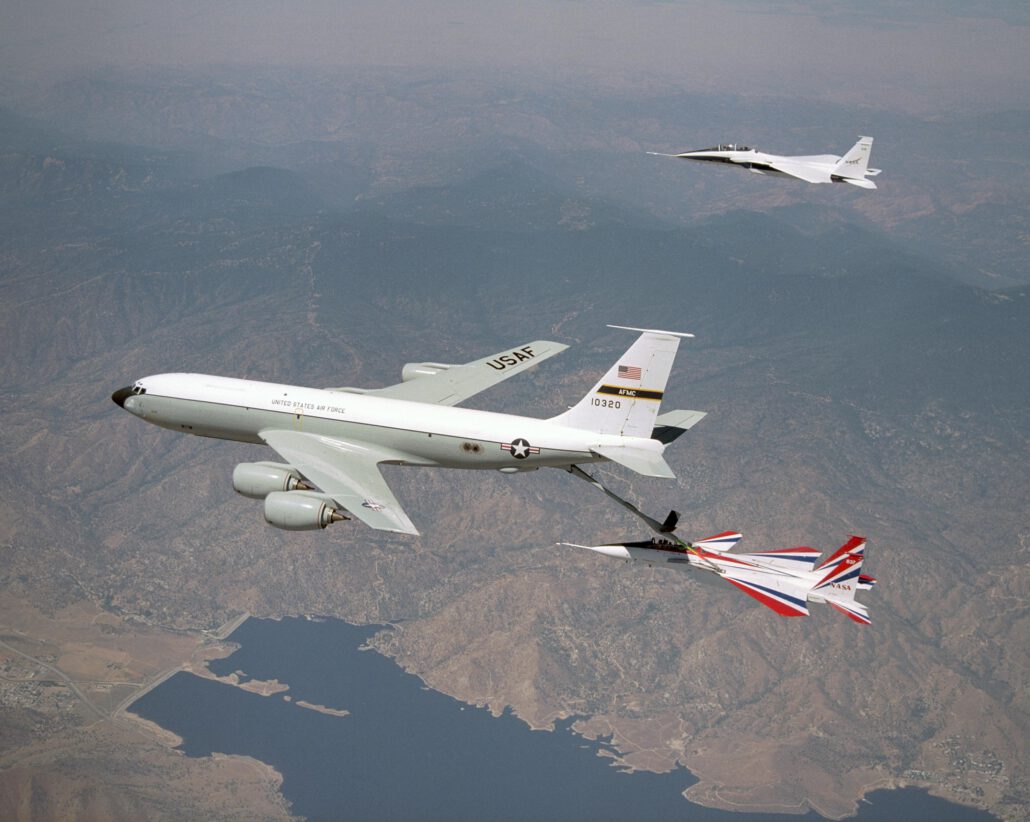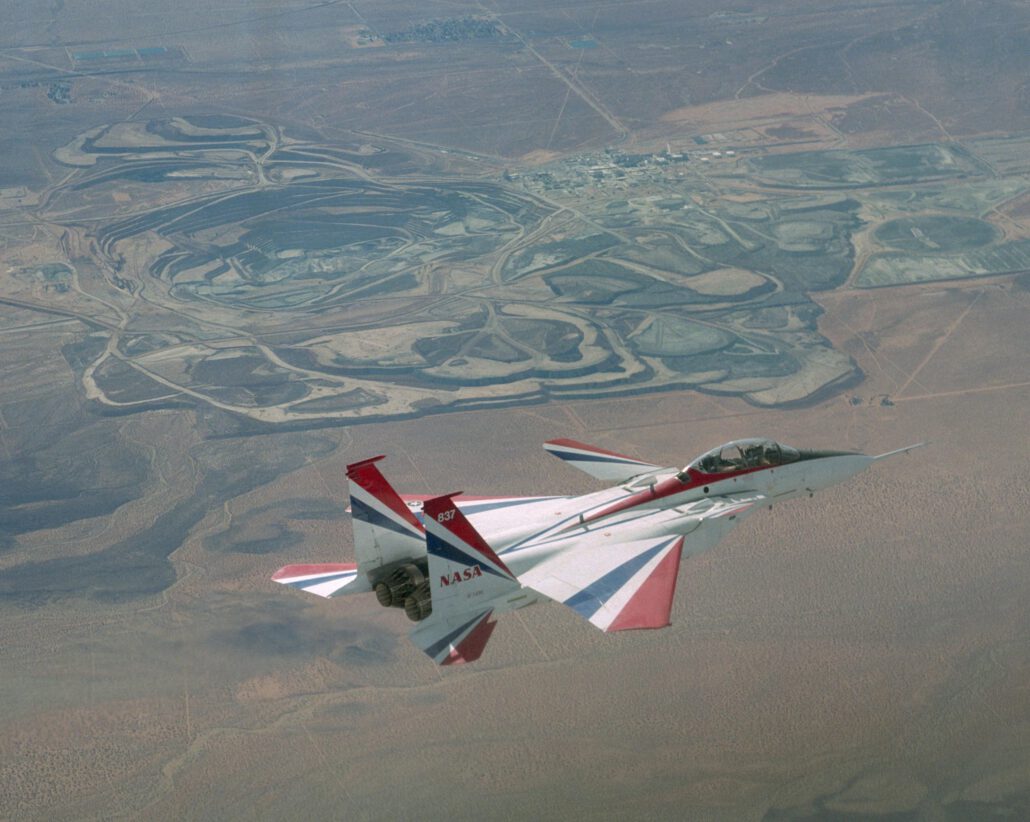
The Intelligent Flight Control System (IFCS) flight research project at NASA Dryden Flight Research Center was established to exploit a revolutionary technological breakthrough in aircraft flight controls that can efficiently optimize aircraft performance in both normal and failure conditions. IFCS was designed to incorporate self-learning neural network concepts into flight control software to enable a pilot to maintain control and safely land an aircraft that has suffered a failure to a control surface or damage to the airframe.
Major control surface or airframe damage hinders an aircraft flight control system’s design integrity, rendering traditional fixed control systems virtually worthless. The IFCS team has integrated innovative neural network technologies with state-of-the-art control algorithms to correctly identify and respond to changes in aircraft stability and control characteristics, and immediately adjust to maintain the best possible flight performance during an unexpected failure. The adaptive neural network software “learns” the new flight characteristics, onboard and in real time, thereby helping the pilot to maintain or regain control and prevent a potentially catastrophic aircraft accident.
The primary goal of the project was to develop adaptive and fault-tolerant flight control systems leading to unprecedented levels of safety and survivability for civil and military aircraft. The IFCS project was representative of the type of flight research conducted by NASA to explore new control technologies, blending intelligent flight controls with adaptive airframe structures to expand aircraft performance and capabilities.

The IFCS testbed aircraft was a highly-modified McDonnell Douglas NF-15B Eagle that was formerly flown in the Advanced Control Technology for Integrated Vehicles project at NASA Dryden from 1996 through 1999.
The flight test results will be used in an overall strategy aimed at advancing neural network-based flight control technology to new aerospace systems designs. Many vehicle classes will be considered as opportunities arise, including commercial, fighter, transport aircraft, unmanned air vehicles, and spacecraft.
The ultimate goal of the IFCS project was to develop and demonstrate a direct adaptive neural network-based flight control system. The direct adaptive approach incorporated neural networks that were applied directly to the flight control system feedback errors to provide adjustments to improve aircraft performance in normal flight and with system failures. A secondary goal was to develop the processes of verification and validation of neural networks for use in flight critical applications.
Preliminary flight tests of an IFCS neural network that was pre-trained to the NF-15B’s aerodynamic database were flown in Spring 1999. These tests validated the non-learning portions of the IFCS Generation I concept. As the aircraft flew, the pre-trained neural network provided a best estimate of stability and control characteristics based on wind tunnel information. The IFCS control algorithm used this information to adjust the control settings to stabilize the system and provide specific flying characteristics.
IFCS Generation I Tests
The IFCS Generation I flight tests, flown in 2003, used onboard algorithms to identify changes in aerodynamic characteristics. It used a Neural Network to organize and map these aerodynamic changes, and provided the flight control system with that information. The flight control system used this information to stabilize the aircraft and provide specific flying characteristics. The Generation I system was flown in an open loop. Prior to the Generation I flights, risk reduction flights were flown in 2002 that provided information to develop and refine the system prior to actual IFCS tests.
IFCS Generation II Tests
Generation II IFCS flight tests will allow the neural networks to take more direct control of the vehicle, working alongside the flight controller to adjust for any shortcomings. The neural network will be more like an equal partner with the flight control system. The performance of this system will be directly compared with the performance of Generation I. It is expected that the Generation II system will provide quicker response to simulated failures.
The Generation II system is a direct adaptive system that applies corrections continuously and learns by observing the overall effect on performance. Because the system is more closely integrated into the flight controller, it requires advances in techniques to flight-qualify learning systems. Similar to earlier IFCS risk reduction work, risk reduction flights were flown earlier in 2005 in preparation for the Generation II tests.
The IFCS project was a collaborative effort among NASA Dryden Flight Research Center; NASA Ames Research Center, Moffett Field, CA; Boeing Phantom Works, St. Louis, MO; the Institute for Scientific Research, West Virginia University, Fairmont, WV; and the Georgia Institute of Technology.